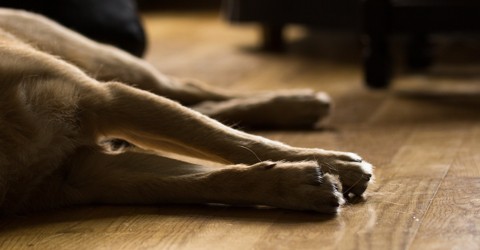
Dog Kidney Disease Symptoms
February 8, 2022
When you should consider compassionate home euthanasia for your cat
February 22, 2022When it comes to putting a beloved dog to sleep due to Cushing’s disease, the vet caring for your pet should be able to help you assess the situation. The decision primarily rests with the pet owner. Cushing’s is an incurable condition in dogs. The best time to euthhttps://cloud9vets.co.uk/cushings-disease-in-dogs/anise a dog with Cushing’s disease will depend on how advanced the disease is, as well as other factors such as quality of life, the extent of suffering, and the cost of ongoing treatment. However, it is typically suggested that a dog should only be put down if their quality of life has declined to an unacceptable level. Here we explain what Cushing’s disease in dogs is, and what happens when left untreated. We’ll also cover when to euthanize a dog with Cushing’s disease.
TABLE OF CONTENT
- First, What is Cushing’s disease?
- Dog breeds prone to Cushing’s disease
- Is my dog in pain?
- Cushing’s Disease in Your Dog – Forms
- Symptoms of Cushing’s Disease in Dogs
- Is Cushing’s the same as diabetes in dogs?
- Diagnosing Cushing’s Disease in Dogs
- What treatments are available?
- What happens when you leave Cushing’s untreated?
- How long does a dog live with Cushing’s Disease?
- Final Stages of Cushing’s in Dogs
- When to put a dog down with Cushing’s Disease?
- Get Professional Help and Support
First, What is Cushing’s disease?
Also known as hyperadrenocorticism this disease is caused by a benign tumour located in the pituitary gland. The hormone secreted by the pituitary gland informs all other glands to produce cortisol in massive doses.
An excess of cortisol causes all sorts of problems. Cortisol is a steroid hormone and these steroids have side effects including the development of Cushing’s.
Dog breeds prone to Cushing’s disease
Certain breeds of dogs are more prone than others to Cushing’s disease.
Breeds at higher risk include:
- Dachshund;
- Poodle;
- German Shepherd;
- Dandie Dinmonts terriers;
- Yorkies terriers.
Other breeds at high risk include:
- Boxers;
- Labrador Retrievers;
- Maltese;
- Boston Terriers;
- Cockers Spaniels;
- Australian Shepherds.
The exact mode of inheritance responsible for this disorder is still unknown.
Is my dog in pain?
With proper diagnosis and ongoing treatment, the symptoms should be controllable. While your dog may not be in pain when they are diagnosed with Cushing’s disease, they may begin to experience a variety of symptoms over time as the disease progresses. It is important to speak with your vet about the best treatment plan for managing the condition of your dog. Herbal remedies can help by balancing systems within your dog’s body and addressing the disease’s causes. This soothes the painful symptoms of illness and disease at the same time.
Cushing’s Disease in Your Dog – Forms
Dogs can suffer from three forms of Cushing’s:
Typical Cushing’s Disease
This disorder causes the adrenal glands to produce too much cortisol. The adrenal glands in your dog are located next to the kidneys. Here a variety of hormones are produced by the outer cortex:
- Cortisol which regulates the immune system and metabolism
- Sex hormones with the production of oestrogen and progesterone
- Aldosterone controlling water metabolism and blood pressure
The inner layer produces two hormones.
Pituitary Dependent Cushing’s
This is when the pituitary gland overproduces the hormone ACTH. This triggers excessive levels of the stress hormone cortisol.
Atypical Cushing’s Disease
This recently discovered disorder happens when the adrenal cortex produces excess steroid hormones resulting in similar signs to typical Cushing’s.
Symptoms of Cushing’s Disease in Dogs
Here are the most common signs of Cushing’s disease in dogs:
- Fur loss
- Excessive thirst and urination
- Skin thickening
- Chronic skin infections
- Urinary tract infections
- Increased appetite
- Muscle loss and weakness
- Distended abdomen
- Weight gain and lethargy
- Irregular metabolic and immune system activity
Most of these might not be painful, but are considerably associated with poor health. The disease can lead to further health complications. Treatment is available and can help alleviate the symptoms of Cushing’s Disease and improve your dog’s overall quality of life.
Is Cushing’s the same as diabetes in dogs?
No, Cushing’s disease in dogs is not the same as diabetes. Cushing’s disease is caused by a tumor on the pituitary gland that secretes too much of the hormone cortisol. This can lead to an increase in blood sugar levels similar to diabetes, but it is a different condition altogether. Diabetes in dogs is caused by insufficient insulin production or the inability to properly utilise existing insulin. Cushing’s does not cause weight loss like diabetes does. Furthermore, a dog can have both diabetes and Cushing’s disease at the same time. It is estimated that somewhere between 15-30% of dogs diagnosed with diabetes will also have a concurrent Cushing’s disease.
Diagnosing Cushing’s Disease in Dogs
Tests performed to diagnose Cushing’s include:
- Screening tests – urine cortisol ratios
- Differentiation tests
- Ultrasound
The most common method of diagnosis includes an ACTH stimulation test. This tests if there is an abnormally high level of cortisol in the dog’s body. Additional tests that may be done include a urinalysis, complete blood count (CBC), biochemical profile, and ultrasound. These tests are used to confirm the diagnosis and rule out other potential diseases and conditions that may be causing similar symptoms.
What treatments are available?
Dogs with mild symptoms will be closely monitored before treatment begins.
Other treatment options involve destroying enough of the adrenal gland to reduce the secretion of cortisol when administered very carefully.
Oral medications can suppress cortisol production and will be needed for life. As these drugs can have serious potential side-effects your dog will need to be tested frequently. Common side effects include are poor appetite, vomiting, and lack of energy. More serious complications can involve collapse, severe hormone imbalances, destruction of the adrenal glands, and even death.
Your pet may need surgery to remove an adrenal tumor and you should follow the vets’ instructions exactly. You’ll need to watch out for signs of internal bleeding such as pale gums, rapid breathing, and general weakness. There are many potential risks for surgery as it’s extremely complex. And surgical techniques to remove pituitary tumors aren’t widely available.
What happens when you leave Cushing’s untreated?
Generally, an untreated dog can live as long as a treated dog but with side effects. Treatment doesn’t actually change the lifespan. However, it gives a better quality of life when you address the symptoms.
Complications may occur in the form of diabetes or a blood clot in the lungs. Moreover, hypo adrenal corticism if left untreated can lead to death.
How long does a dog live with Cushing’s Disease?
The ultimate age for a dog to survive with Cushing’s is approximately three years. However, in some cases, there is a survival rate of two years.
Dogs with the disease can have a good quality of life if they’re closely monitored by a vet. This means regular check-ups, blood work, and the administration of any required medication.
Final Stages of Cushing’s in Dogs
As Cushing’s in dogs progresses to its final stages, health complications like those involving the heart, kidneys, and spleen may arise. Warning signs include uncontrollable urination and excessive drinking. Acute cases may include additional physical symptoms such as vomiting or diarrhea, whereas chronic stages typically involve changes in behavior or appearance but no obvious physical abnormalities.
Warning signs:
- uncontrollable urination
- excessive drinking
Unfortunately, due to the overlap of symptoms that Cushing’s causes with other conditions, accurately diagnosing it in its latter stages can be difficult for both owners and veterinarians.
When to put a dog down with Cushing’s Disease?
The most important factors in considering euthanasia are uncontrollable urination and excessive drinking. Dogs with neurological signs from a pituitary tumor have a poor prognosis. Medical therapy for adrenal-dependent Cushing’s has a fair to good prognosis with a survival rate of about 15 months.
If surgery isn’t an option, treatment with drugs can prolong life before your dog’s quality of life becomes unacceptable.
Get Professional Help and Support
Putting a dog to sleep is never an easy decision. So, you can get a detailed explanation about dog euthanasia from caring home-visit vets. When you’re ready the vet will come to your home. They will administer a sedative to send your dog into a peaceful sleep. Then an anesthetic agent will cause the heart to slowly stop, calmly and serenely. You can make any aftercare arrangements with the help of Care coordinators.







